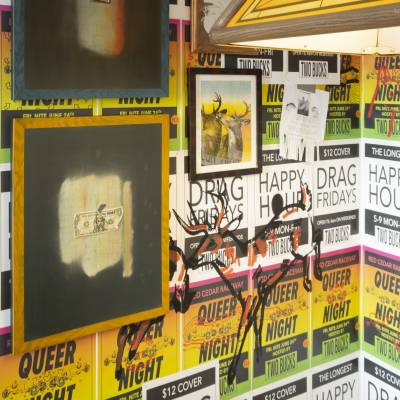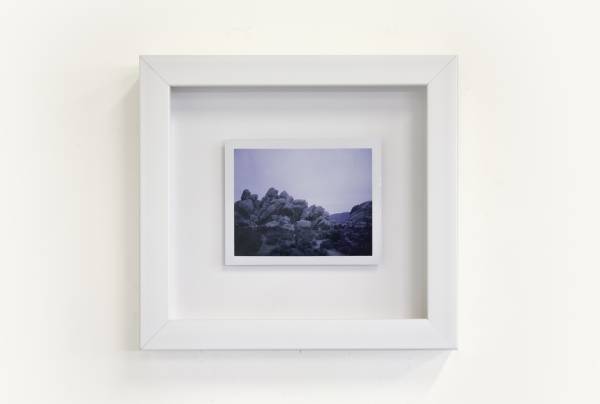
Exhibitions
In Plain Sight: Queer Rural Narratives from the Water and the Land
Left: Robert Martin, Two Bucks (detail)

In Plain Sight: Queer Rural Narratives from the Water and the Land complicates assumptions about queer history and what it means to be seen. The exhibition features the work of five artists, each of whom has a different relationship to rural ecologies and the impacts of extraction, whether physical or cultural. Their work contends with lived experience in smaller, more remote places, the two-way flow of influence between rural and urban areas, and the ways climate change highlights parallels between the treatment of vulnerable ecosystems and populations. Whether by piecing together family lineages or inserting themselves into alternate realities, the artists in In Plain Sight revive and construct narratives of queer existence, resistance, and enduring vitality in rural environments.
Left: Ben Cuevas, Untitled (Joshua Tree Faggoted Fringe) I

Even as In Plain Sight relies on a shared understanding of the word “rural,” it demonstrates just how indefinite that concept is. In the mainstream, “rural” often serves to justify the extraction of natural resources from less-populated places because they are considered to be “the middle of nowhere.” In addition to being untrue, this ignores the downstream, interconnected effects of environmental destruction. The artists in In Plain Sight have a complicated, at times uneasy, relationship to the rural, encompassing a sense of deep belonging and of alienation. Lindsey Cherek Waller and Robert Martin explore this complexity in their work that centers family members, both biological and chosen. While the exhibition highlights multiple, different ecosystems across the U.S., many of the artworks share a claim that the narrative of gay people escaping their rural upbringing for the big city is not one size fits all.
As queer art and storytelling look to the future to envision a more liberatory existence, they often reckon with climate futures as well. Land and water (or lack thereof), and people’s relationship to them, are often visibly at the forefront in rural places. Several of the artworks in In Plain Sight are keenly attentive to these forces and offer an alternative perspective to the idea that people are separate from their environment. Janie Stamm draws from her formative years in the Florida Everglades to create work that combines aquatic organisms with meticulously hand-worked artistic processes. Ben Cuevas composes landscapes in unconventional materials, such as yarn, that operate as portraits, imbuing the land with subjecthood. José Villalobos references pastimes, labor practices, and methods used to both manage land and control the movement of people that hold significance in many rural and border communities. The integration of personal experience and natural elements in these works questions the compartmentalization, over time, of both human sexuality and nature.
In Plain Sight asserts that the work of queer artists and culture bearers in rural places can teach us something about the inextricability of people and climate. As the LGBTQ+ rights movement evolves, even in the face of continued harassment and policing of queer individuals, new modes of self-expression have emerged. In Plain Sight exhibits some that draw strength from the water and the land to place marginalized existences at the center of a more loving, lasting world.
Right: Janie Stamm, Ghosts of Gays Past (detail)
Below: Lindsey Cherek Waller, Impolite Cake #2 (detail)

Exhibiting Artists:
Ben Cuevas - bencuevas.com
Lindsey Cherek Waller - lindseycherek.com
Robert Martin - robertmartinstudio.com
Janie Stamm - janiestamm.com
José Villalobos - josevillalobosart.com